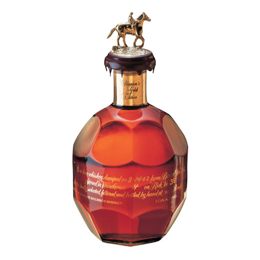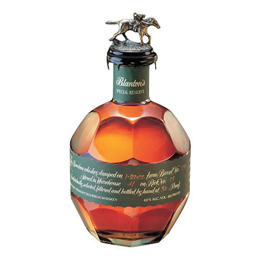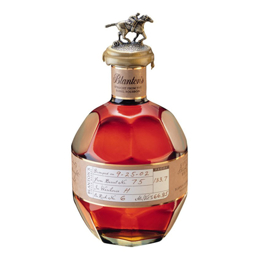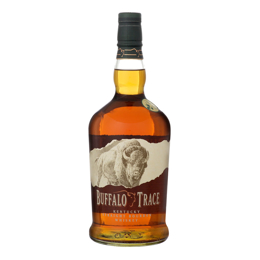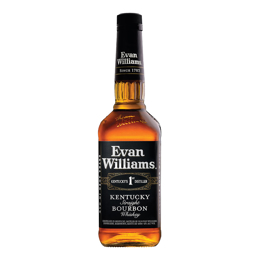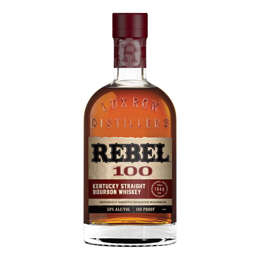Bourbon Whiskey
Bourbon, North America's mother spirit, is known for its sweet and robust taste. Made primarily from corn (at least 51%) and matured in new, charred oak barrels, it usually features notes of caramel, orange peel and vanilla, as well as a touch of spices. Kentucky is the heart of Bourbon production.
Four Roses Bourbon Whiskey 700ml
Jim Beam Bourbon Whiskey 700ml
Frequently Asked Questions
01 What is bourbon whiskey and how does it differ from other types of whiskey?
Bourbon is definitely whiskey. Whiskey is not necessarily bourbon. For a whiskey to qualify as bourbon, it must be made from at least 51% corn. Place of origin must be the USA, but not necessarily the state of Kentucky, which many consider the homeland of this particular spirit. Other types of whiskey may be made entirely from barley or rye, and others may have corn in their composition, but less than 51%. Finally, the aging of bourbon must take place in new oak barrels, with a charred interior.
02 Which are the main ingredients used to make bourbon?
The percentage of corn in the composition of bourbon is at least 51%. Remaining ingredients include oats, rye, barley and wheat, in proportions chosen by each producer.
03 What is the difference between Kentucky Straight Bourbon and other types of bourbon?
Guess where Kentucky Straight Bourbon is made… In the state of Kentucky! Bourbon not bearing the designation "straight" is produced in any other part of the USA, even in the aforementioned state. Therefore, even Kentucky produces bourbon that is not straight. Straight bourbon is also produced outside of Kentucky. Let's not get confused: straight bourbon does not mean bourbon meant to be drunk neat, nor does it mean bourbon made in Kentucky. It means bourbon, which has been aged for at least two years in brand new, charred, oak barrels. If aged for less than two years, or if the barrels are previously used, or if further flavoring is applied after the whole process, then the bourbon has no right to be called straight.
04 Who are the most famous bourbon producers?
Some of the famous ones are Wild Turkey Distilling Co., Four Roses Distillery and James Beam Distilling Co.
05 How does aging affect the flavor of bourbon whiskey?
As with any American whiskey, aging imparts notes of wood, vanilla, cinnamon, leather, coffee, chocolate and pepper. The charring degree of the barrel determines which of the above elements will be more apparent.
06 Which are the main aromas and flavors of bourbon?
Due to the leading participation of corn in its preparation, bourbon is relatively sweet. Usual aromas and flavors include tobacco, almond, vanilla, hazelnut, cinnamon, pepper, leather, chocolate, butter, oak, honey, and orange.
07 Which bourbon whiskey do you recommend for a first-timer?
For a more “conservative” drinker, the recommendation would include Wild Turkey, Jim Beam and Bulleit, while for a “bolder” one the recommendation would extend to Elijah Craig Small Batch, Knob Creek Small Batch and Evan Williams Black.
08 How does using different barrels affect the quality of bourbon?
When we talk about the quality of bourbon, we mean the plouralism of its organoleptic characteristics. Longer "toasting" time of the barrel hosting the distillate, means that notes of vanilla, cinnamon and oak give way to notes of pepper, coffee and leather. If used barrels also participate in the aging process, then fruity elements, such as cherry, orange and apple will appear as well.
09 Which bourbon is best for use in cocktails?
Not just one. Some of the best bourbons for cocktails are Evan Williams Bottled-in-Bond, Wild Turkey 101, Maker's Mark and Jim Beam Single Barrel.
10 Which are the main bourbon producing regions and how do they affect its taste?
It is said that 95% of bourbon production occurs in the state of Kentucky. In almost all the bourbons of this particular region, notes of limestone can be distinguished, a characteristic that differentiates them from the rest. Neighboring states of Virginia and Indiana also produce exquisite bourbons, usually fruitier than Kentucky's. The states of Oregon and Colorado make excellent bourbon, as well. The superb waters of the Rocky Mountains impart a crystalline flavor to the spirits. The state of Texas is not far behind. In the deserts of the region, the temperature fluctuation between day and night imposes its own rhythm on the maturation of bourbon. It becomes darker in color and more "aggressive" on the palate.


